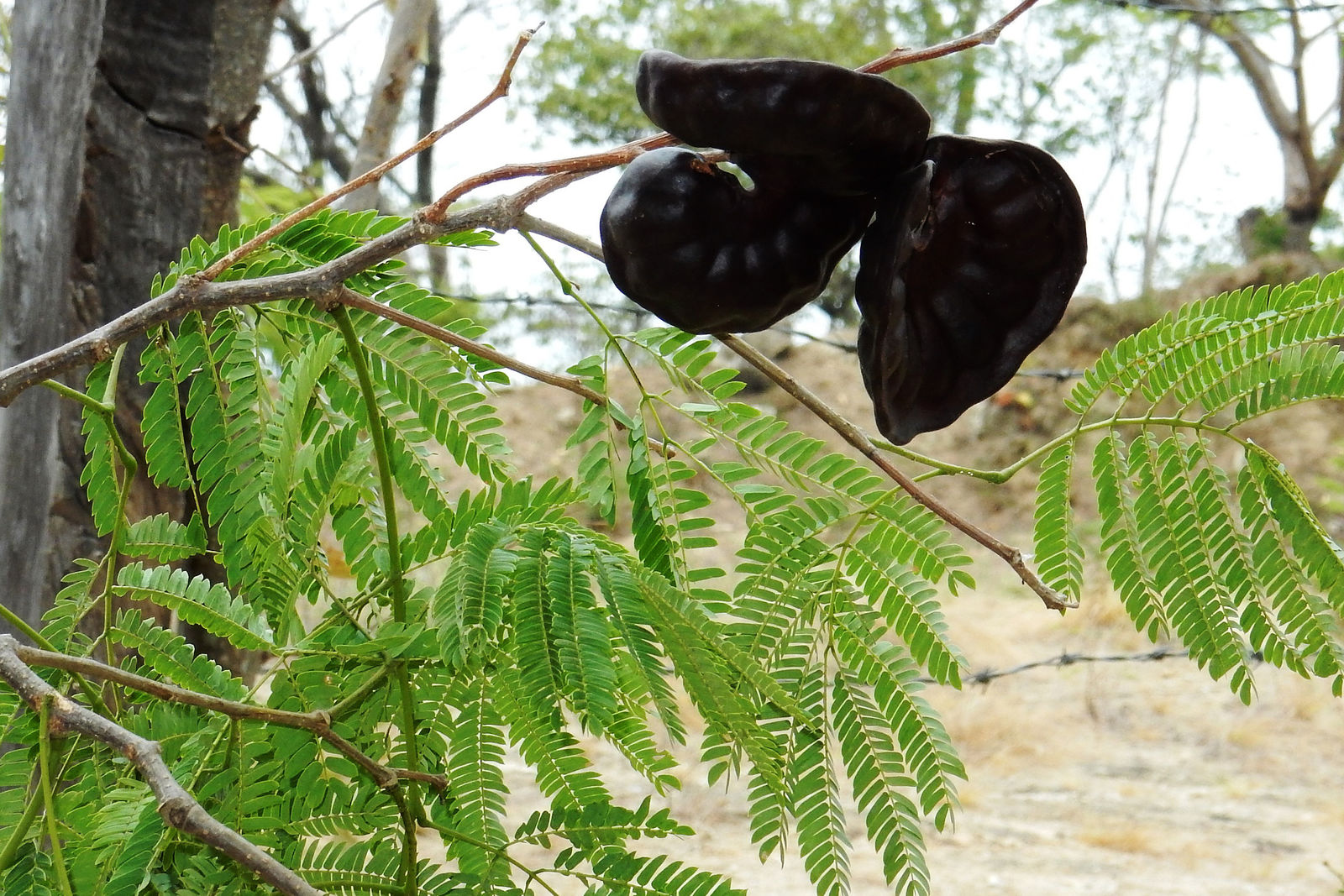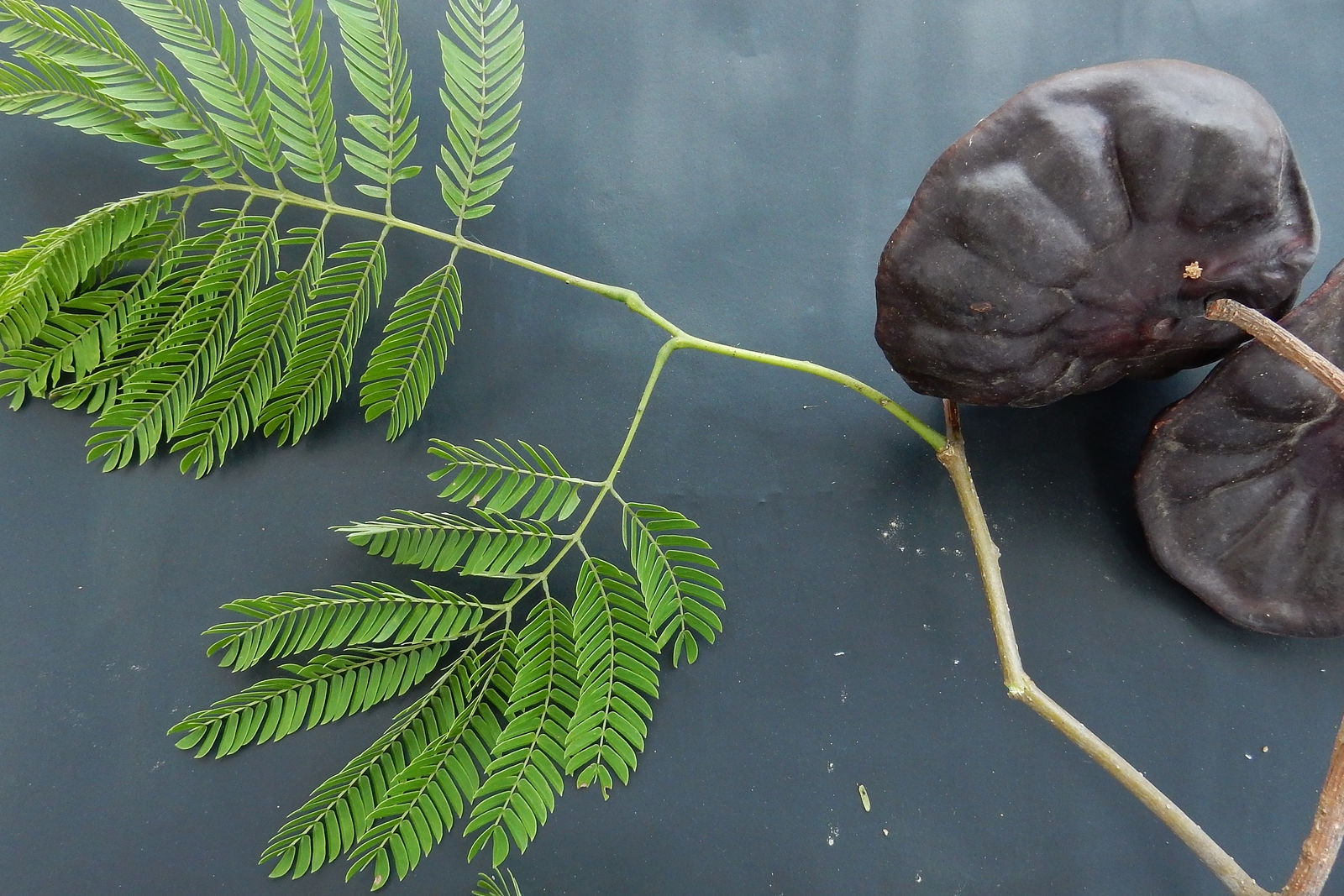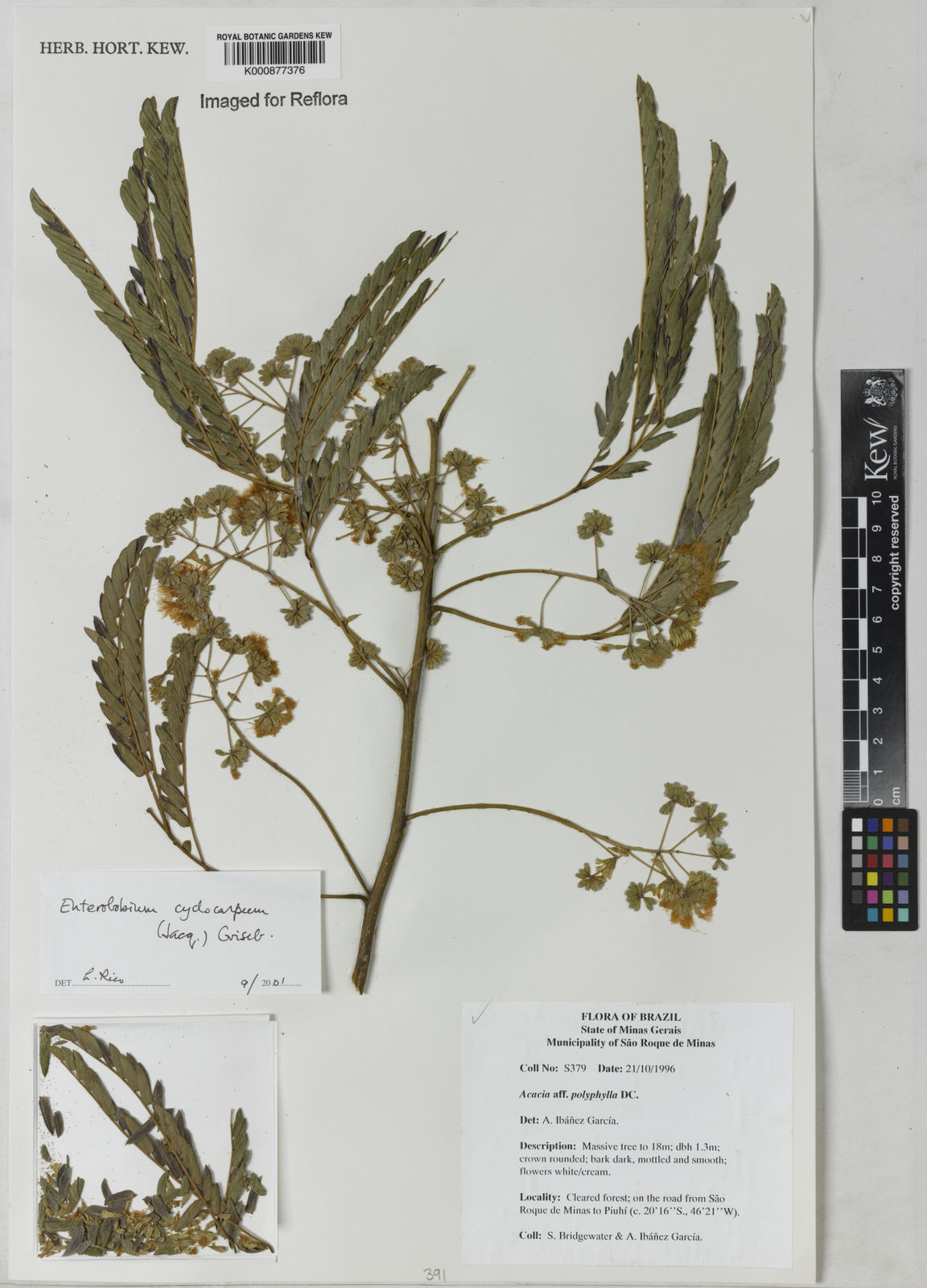Guanacaste, Earpod tree, Caro caro
enterolobium cyclocarpum
Also known as: ["Guanacaste","Earpod tree","Caro caro","Frijolera"]
Overview
A large, deciduous tree native to tropical regions of the Americas, known for its distinctive ear-shaped pods and large size.
Benefits & Perks
["long-flowering","wildlife attractant (bees, butterflies, birds)","shade tolerant"]
Botanical Classification
| Phylum: | Magnoliophyta |
| Class: | Magnoliopsida |
| Order: | Fabales |
| Family: | Fabaceae |
| Genus: | Enterolobium |
| Botanical Name: | Enterolobium cyclocarpum |
Plant Characteristics
Basic Information
- Category: Trees
- Suitable Location: outdoor garden in tropical or subtropical regions
- Suitable For:
- Is Weed: No
- Allergenicity: low
Environmental Needs
- Climate: {"temperatureRange":"15–35°C"}
- Hardiness: {"zones":"9–11"}
- Misting: rarely required, only if ambient humidity is very low
- Drainage: Fast-draining to prevent waterlogging.
- Soil Type: Well-draining potting mix with added perlite or sand; can tolerate slightly sandy soils.
Maintenance Level
- Maintenance Level: moderate
- Toughness Level: high
- Pruning Frequency: Annually or as needed to maintain shape and health.
- Pruning Intensity: Moderate; remove up to one-third of growth if necessary.
Care Details
Ideal Sunlight Coverage:
Full sun (6–8 hours of direct sunlight daily); tolerates partial shade but may become leggy.
Sunlight Tolerance Tips:
Acclimate gradually if moving from shade to sun; protect from intense midday sun in hot climates; ensure outdoor placement receives adequate light.
Care Requirements
Care Difficulty
moderatemoderate
Sunlight
full sun
Rotate plant for even growth; use sheer curtains to filter intense light; avoid sudden light changes.
Watering
every 7–10 days during growing season, reduce in winter
Water thoroughly until it drains from the bottom, allow soil to dry between waterings, and avoid overwatering.
Soil
well-drained, loamy soil
pH: Slightly acidic to neutral (pH 6.0–7.0).
Avoid heavy clay soils; ensure pots drain well; topdress with compost annually.
Temperature
Thrives in warm temperatures (65–85°F or 18–29°C); prefers stable conditions, sensitive to frost.
Avoid sudden temperature shifts; protect from frost; maintain consistent warmth during active growth.
Fertilizing
every 4–6 weeks during active growth
Apply fertilizer after watering to prevent root burn; flush soil occasionally to prevent salt buildup; adjust frequency based on growth rate.
Propagation
Methods
Stem cuttings or seeds; stem cuttings are more common for home growers.
Step-by-Step Propagation Guide
- Take a 4–6 inch cutting, remove lower leaves, apply rooting hormone, plant in medium, keep moist and warm, wait for roots.
Best Time: Spring or early summer when the plant is actively growing.
Environment
Warm (70–75°F or 21–24°C), high humidity (70–80%), and bright indirect light.
Medium
Well-draining potting mix with perlite or sand; can also use water propagation for cuttings.
Hormone
Rooting hormone is recommended to improve success rates.
Timeline
Cuttings may root in 4–8 weeks; seed germination can take 2–4 weeks with establishment over several months.
Tools Needed
Pruning shears, rooting hormone, small pots, well-draining medium, plastic wrap or propagator.
Quick Tips
Use healthy, non-flowering stems; maintain consistent moisture; provide bottom heat if possible.
Pruning & Repotting
Pruning Guide
Method
Selective pruning of branches, thinning out dense areas, and cutting back leggy stems.
Pruning Plan
Shape the plant, remove dead or diseased growth, and encourage bushier growth; best done in spring before active growth.
Tools
Pruning shears, loppers (for larger branches), gloves, disinfectant.
Checklist
Disinfect tools, prune during dormancy or early growth, make clean cuts, remove debris, monitor for regrowth.
Repotting Guide
Best Season
Spring, before the growing season begins.
Pot Size
One size larger pot (e.g., +2 inches in diameter) with good drainage.
Method
Remove plant gently, trim roots if crowded, place in a slightly larger pot with fresh soil, water lightly, and avoid direct sun for a few days.
Suggestions
Repot every 2–3 years or when roots fill the pot; necessary to refresh soil and provide space for growth.
Checklist
Check root bound status, prepare new pot, trim roots if needed, use fresh soil, water lightly, adjust care post-repotting.
Advanced Care Tips
Watering Mastery
Watering Checklist
Check soil moisture, water deeply, ensure drainage, adjust for season.
How to Apply Water Properly
Water directly at the root zone, ensure water penetrates deeply to reach the root ball, allow excess water to drain, and water in the morning to reduce evaporation.
Watering Schedule Tips
Water deeply once the top inch of soil feels dry; reduce frequency in winter to prevent root rot.
Soil Improvement
Add perlite or coarse sand for drainage; incorporate organic matter like compost for fertility; ensure pots have drainage holes.
Temperature Stress Management
Signs of Temperature Issues
Leaf drop, stunted growth, yellowing leaves, or bud drop in extreme conditions.
Cold Stress
Leaves may wilt, turn yellow, or drop; growth halts; severe cold can cause dieback or death.
Solution: Move to a warmer location, protect from drafts, cover with frost cloth if outdoors, and avoid watering until temperatures rise.
Hot Stress
Leaves may scorch, wilt, or curl; growth slows; soil dries out quickly.
Solution: Provide shade during peak heat, increase watering frequency, mist leaves in the morning, and ensure good air circulation.
Fertilizing Guide
Fertilizing Checklist
Check season, dilute properly, apply to moist soil, avoid contact with leaves, stop in winter.
Fertilizing Method
Use balanced liquid fertilizer diluted to half strength every 4–6 weeks during growing season (spring/summer); avoid fertilizing in winter.
Common Problems & Solutions
Toxicity Warning
Cats
Non-toxicThe seeds of Enterolobium cyclocarpum are generally considered non-toxic to cats. However, ingestion of large quantities may cause mild gastrointestinal discomfort due to their high fiber content. There are no known significant toxic effects or physiological impacts associated with typical consumption.
⚠️ Symptoms:
🌿 Toxic Parts:
⚡ Toxic If:
if eaten in large quantities
Dogs
Non-toxicThe seeds of Enterolobium cyclocarpum are generally considered non-toxic to dogs. However, ingestion of large quantities may cause mild gastrointestinal discomfort due to their high fiber content. There are no known significant toxic effects or physiological impacts associated with typical consumption.
⚠️ Symptoms:
🌿 Toxic Parts:
⚡ Toxic If:
if eaten in large quantities
Humans
Non-toxicThe seeds of Enterolobium cyclocarpum are generally considered non-toxic to humans. However, ingestion of large quantities may cause mild gastrointestinal discomfort due to their high fiber content. There are no known significant toxic effects or physiological impacts associated with typical consumption.
⚠️ Symptoms:
🌿 Toxic Parts:
⚡ Toxic If:
if eaten in large quantities
Frequently Asked Questions
Q: Is the Guanacaste tree suitable for urban planting?
A: Yes, it is suitable for urban planting due to its tolerance to various soil conditions and its ability to provide shade.
Q: Does the Guanacaste tree attract wildlife?
A: Yes, it attracts a variety of wildlife, including bees, butterflies, and birds, due to its flowers and seeds.
Q: How fast does the Guanacaste tree grow?
A: It is a moderately fast-growing tree, capable of reaching significant size within a few decades.
Quick Reference
| Family: | Fabaceae |
| Care: | moderate |
| Light: | full sun |
| Water: | every 7–10 days during growi |
Get Expert Care Tips
Download the Plantious app for personalized care reminders and plant identification!
Google Play App Store








